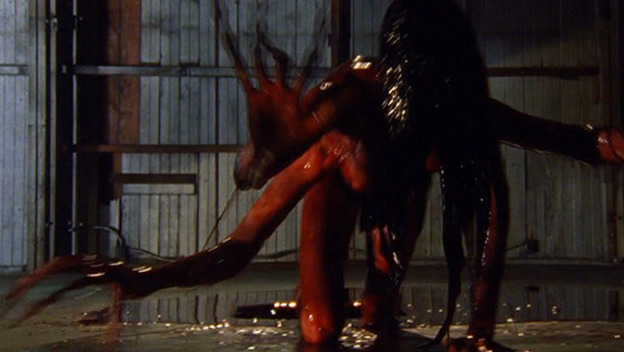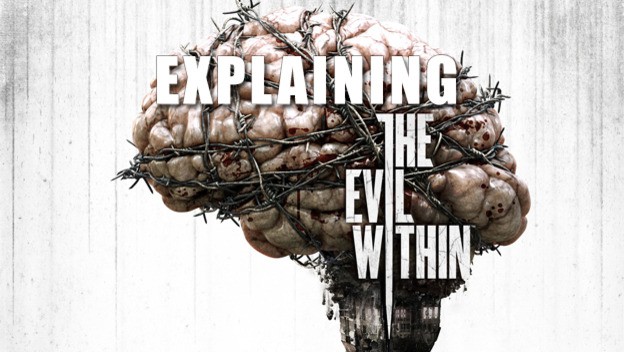Survival horror has become a woefully unpopular genre in today’s games industry. Excluding a few niche favorites like the Dead Space series (which, if I may so myself, lost touch with its horror roots in later installments), the widely successful Amnesia: Dark Descent, and a few others, a good scare is virtually unheard of in gaming. In response to this scarcity, Shinji Mikami, the creator of the pioneering Resident Evil series, began Tango Gameworks’ newest project: The Evil Within. Mikami has boasted that the game will provide a visceral, immersive, and terrifying experience, but we’ve had little information to go on outside of a few trailers. In an effort to get a better understanding of what The Evil Within will really offer, I sat down with Masato Kimura, lead producer on The Evil Within, and Ray Nakazato, studio liaison and translator over at Tango, to discuss the game’s take on the various nuances of horror.
As a connoisseur of the genre myself, I was all too eager to get to the meat of the gameplay, currently one of the lesser-known aspects of TEW. Before speaking with the developers, I saw (but, regrettably, was unable to play) two demo levels played live by Kimura. In the roughly 20 minutes of content, I’d seen numerous enemies dispatched by way of mines, fire, and the typical pistol. Intrigued, I inquired about how combat would be handled and how powerful the player would feel.
Let me offer a premise for the unfamiliar. In survival horror, there are basically two types of combat: one in which the player is able to handle most enemies and maintain a level of control, and one where the player is a little sissy who can do little more than run and hide. The former option is more action oriented, and would align with Resident Evil and Dead Space. The latter, however, plays and feels more like an environmental puzzle, and relates more closely to Amnesia or Clock Tower 3.
In response to my question of, “How do you expect The Evil Within to satisfy both, or either, of these gameplay styles?” Kimura explained that The Evil Within will incorporate both styles through its varied level design. In the beginning of the game, for example, the player must escape from an incredibly powerful enemy who can effectively insta-kill Sebastian, the protagonist of The Evil Within, who has no sort of weaponry to combat it. (Sporting a large butcher knife and, later, a chainsaw, the enemy in question is an absolute classic: a psychotic butcher.) Instead, the player must guide Sebastian through the grisly environment— making use of cover and distractions throughout—in order to discover a path away from the butcher. Kimura demonstrated these elements firsthand, having used a thrown glass bottle to distract the butcher long enough for Sebastian to move across an open and vulnerable space.
The Evil Within will also entail a medley of action sections to cater to an audience beyond strictly horror fans. Sebastian will have access to a colorful array of weapons through the game, both familiar and foreign to horror fans. The demonstration showed a torch mechanic which not only provides light but can also be used to burn otherwise reanimating foes, a pistol with an uncannily wobbly reticle, and a deployable mine trap. Kimura assured me that this is but a taste of options that will become available to the player throughout the game. However, as indicated by the erratic aiming of the pistol, no weaponry will overpower the player to the point that they can simply breeze through levels. That sense of power represents a significant threat to the horror atmosphere, as it can quickly remove any sense of tension from confrontations. However, as Kimura explained, The Evil Within will avoid either extreme in order to find a gratifying balance between the two—aiming to strike the golden threshold of horror.
It’s important to remember that The Evil Within is a very new horror game, and that it will be developed on the powerful id Tech 5 engine. This creates an opportunity to capitalize on enhanced visual and audio cues, but also the option of overdoing sensory input to the point that it becomes monotonous and immersion breaking. Curious as to how the team felt technological improvements could help or hinder The Evil Within, I asked for Kimura’s opinion on the relevance of enhanced graphics and sound engines to the horror scene.
A fan of horror himself, Kimura claimed that enhanced visuals only become problematic when handled poorly, and that the team working on TEW is aware of the risk of having the game come across as overbearing. This issue stems from a classic debate among horror media: the efficacy of practical effects. Some argue that there’s something innately endearing about low-quality monsters lurking in the shadows, as opposed to fully fleshed-out monstrosities in plain sight. I’d seen both used in The Evil Within’s demo, and Kimura confirmed the duality of enemy types. It seems that more combatable enemies will, of course, move freely in the world, while the dreaded and more powerful enemies will remain hidden, providing the necessary level of threat. Hidden, of course, until ready to pounce on the unwary character, as seen by the bloodied limb-demon in TEW’s trailer.

The live demo also showed the game’s introductory cutscene, during which several characters were introduced. We see Sebastian, a detective, alongside two law enforcement partners. However, after emerging from the asylum, the heart of the game’s settings, only Sebastian remains. In response to the sudden disappearance of potentially important characters, Kimura mentioned the possibility of collaborating with the pair in future parts of the game, as well as competing for survival.
On a similar note, Kimura explained why an asylum had been chosen for the game’s main—but certainly not only—area. The answer is brutally simple: Because it’s creepy. And creepy it is. It seems that a haunted asylum of sorts was suggested by many members of Tango during the game’s conceptual stages, and the notion helped mold the project into that of a survival horror game in the first place.
The guys over at Tango have demonstrated that they understand the subtleties of horror, and with Shinji Mikami heading the project, they can simply do no wrong. However, The Evil Within is still in infancy, and it won’t be seeing a release for some time, so there’s certainly no solid ground to draw any conclusions. Regardless, what we’ve seen thus far looks to be exactly what Mikami promised: a true horror-gaming experience. And damn, do we need one.
